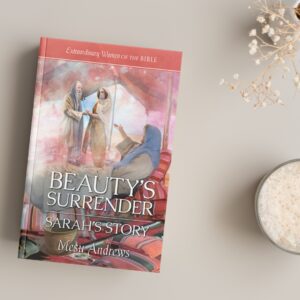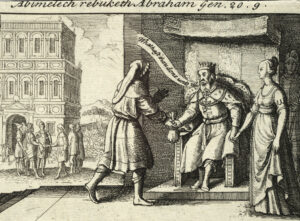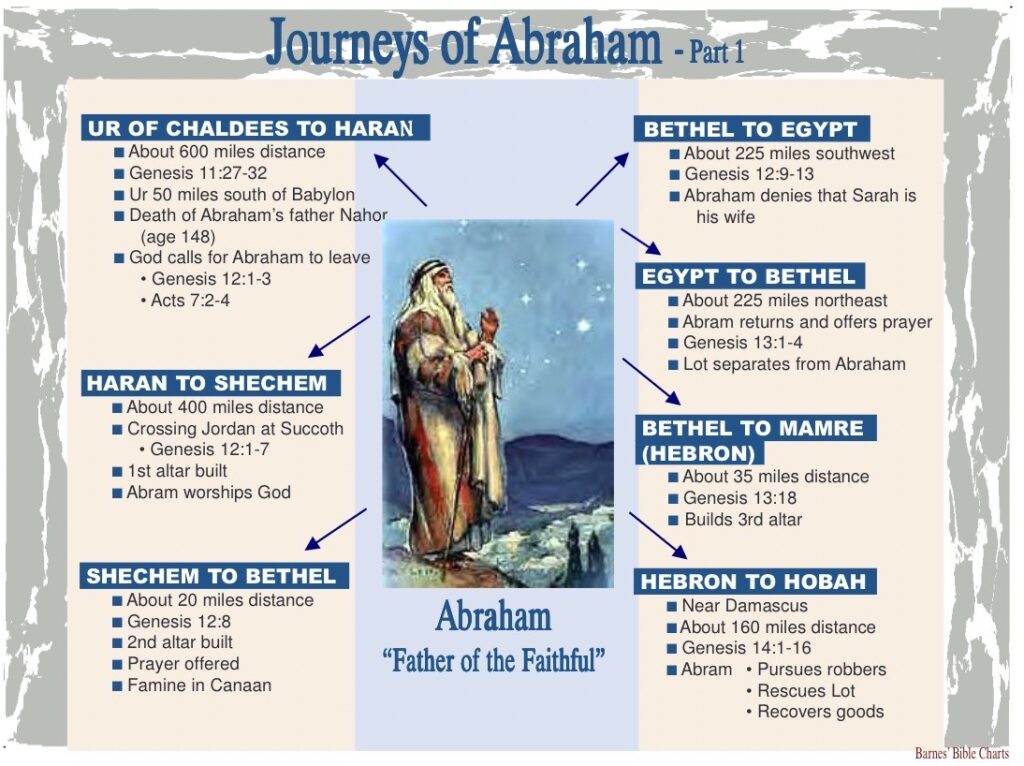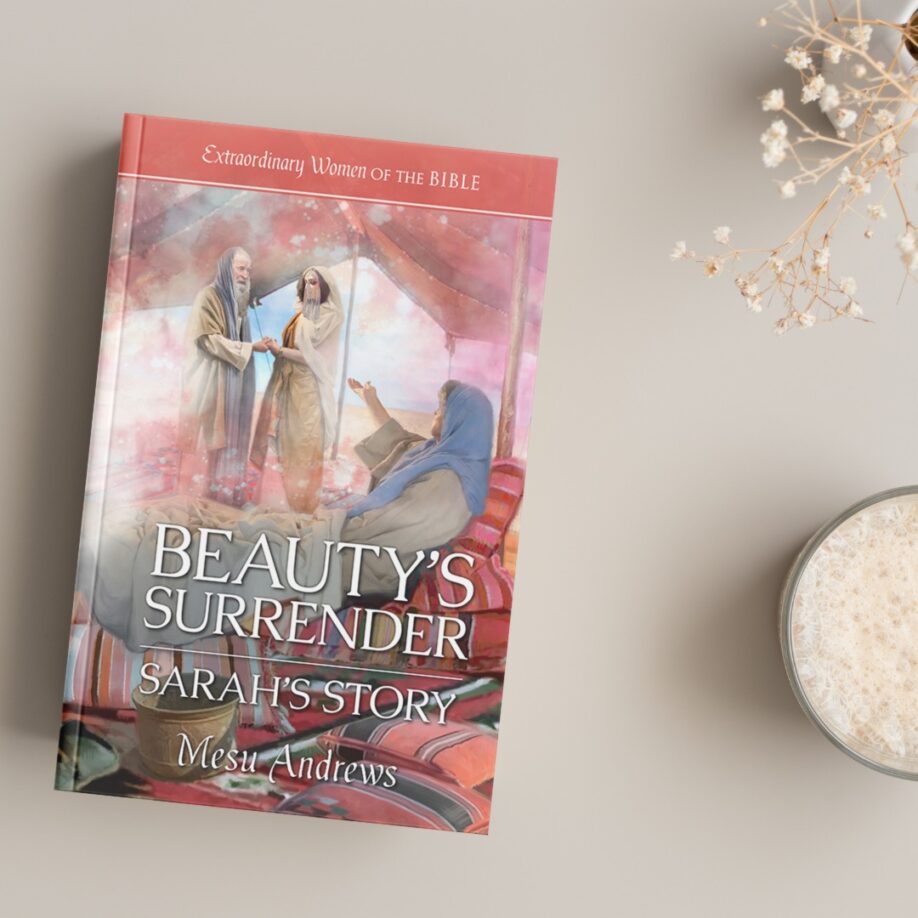 In the first pages of Beauty’s Surrender: Sarah’s Story, our heroine receives her very first personal visitation from Elohim in the form of a dream. She sees herself walking alongside Abram, both of them young and vibrant. She wears her familiar wedding garment and the veil of dangling gold coins. When he pulls the veil of gold aside to kiss her, she sees her lovely handmaid Keturah’s face instead!
In the first pages of Beauty’s Surrender: Sarah’s Story, our heroine receives her very first personal visitation from Elohim in the form of a dream. She sees herself walking alongside Abram, both of them young and vibrant. She wears her familiar wedding garment and the veil of dangling gold coins. When he pulls the veil of gold aside to kiss her, she sees her lovely handmaid Keturah’s face instead!
Sarah wakes with a gasp and realizes her ethereal beauty is gone. She has suddenly aged to her full 127 years—and knows she is dying. But the joy of knowing that Elohim has finally, personally, spoken to her through a dream is rapturous! And His message was clear:
Sarah must convince Abraham to marry Keturah.
But it won’t be easy. The last time she convinced Abraham to marry her handmaid, Hagar, many lives had been ruined (Genesis 16).
Fiction: Sarah’s God-imbued Beauty

Model Yasmina Rossi – my inspiration for Sarah’s timeless beauty. instagram.com/yasmina.rossi
Sarah’s beauty has long been a conundrum to me. What could make her so overwhelmingly gorgeous—at over sixty-five years old—that Abram was certain Pharaoh would take her into his harem by force (Gen.12:10-16)? Then, the Three Visitors came when Sarah was at least eighty-nine and prophesied she’d bear a child from her own body in exactly one year (Gen.18). Days after, Abraham’s household left Judah’s hill country and visited Gerar, where he again hid his marriage to Sarah because of her beauty. King Abimelek also took Sarah into his harem—and neither Abraham nor Sarah objected though God had said she’d bear a child within a year! To save HER, God closed every womb in the king’s household (Gen.20).
When Pharaoh and Abimelek discovered they’d been duped by Abram/Abraham and his beautiful sister/wife, these powerful kings blessed the couple. Really? I would have been angry! Abimelek even went a step farther and made amends to Sarah—a gesture of respect seldom shown toward any woman in a man’s culture.
“To Sarah he said, ‘I am giving your brother a thousand shekels of silver. This is to cover the offense against you before all who are with you; you are completely vindicated.’ ” Genesis 20:16
Extraordinary favor was shown toward Sarah during a time when her womb was likely fertile, yet it’s recorded in Scripture as almost an aside—an afterthought—as if blessing her was natural. As if she was already obviously favored somehow.
My creative fiction brain asked the question: What if miraculous human favor came because God’s miraculous favor had already visited Sarah in the form of other-worldly beauty?
Facts Within Fiction: Making Ethereal Beauty Real
What does God-given beauty look like? Such a gift defied my ability to describe it, but I knew what aging looked like! If God had sustained Sarah’s beauty and helped her bear a son at ninety years old—and then raise that son—doesn’t it make sense that He sustained her physical health and strength too?
Beauty’s Surrender: Sarah’s Story begins when Sarah wakes from a dream—God’s first personal revelation to her. Fantastic, right? But she also wakes to the shock of her body’s old age, experiencing the reality of being 127-years-old as she’d never known it before.
How did she feel—physically, emotionally, and spiritually—to instantly lose her health and beauty? You’ll have to read the book for the full answer, but I’ll share a little of my research on her physical decline.
Heart Disease

Hawthorn plant
The wrinkles evident on the outside reflected the worn-out state of her internal bodily systems. Since heart disease is common in my family, I assigned the heart as her main issue and researched overall symptoms and its ancient treatment.
Angina caused Sarah’s chest pain. What’s angina? Generally, it’s inadequate blood flow to the heart. She was likely treated with what we know today as hawthorn. Hawthorn may have been called, Za’arur, in Arabic and, Ozrar, in Hebrew. CLICK HERE to read more about this common herbal treatment that’s still used today.
Sarah later experiences what most modern readers will recognize as a stroke. I added specific symptoms described in a medical journal as “locked-in syndrome,” in which a patient’s only voluntary movement becomes blinking eyelids and vertical-only eye movement.
Sweet-Love-Story Fiction—With Biblical Truth

Attribution: Wenceslaus Hollar, Public domain, via Wikimedia Commons
Lest you think Sarah’s story sounds depressing, take heart! There are many scenes with humor, conflict, intrigue, and incredible tenderness. Abram/Abraham and Sarai/Sarah had a complex relationship to be sure; however, I found solid evidence of a deep and abiding love between them. (The cartoonish photo depicts King Abimelek rebuking Abraham–but I’m sure it was NO laughing matter when he, his wives, and female slaves were unable to produce children! Gen.20:17)
Though most commentaries condemned Abram/Abraham for “forcing” his wife to lie to Pharaoh and Abimelek, let’s look at what the Bible says about Sarah’s motivation in telling that half-truth about her half-brother:
[Abraham explained to Abimelek,] “When God had me wander from my father’s household, I said to [Sarai], ‘This is how you can show your love to me: Everywhere we go, say of me, “He is my brother.” ’ ” Genesis 20:13
Sarah lied to protect the half-brother/husband she LOVED; and when she died, Abraham left Beersheba to mourn for her in Kiriath-Arba (Hebron).
“She died at Kiriath Arba (that is, Hebron) in the land of Canaan, and Abraham went to mourn for Sarah and to weep over her.” Genesis 23:2
Their love reached beyond circumstances into the core of their identity. Birthed by different mothers, they were raised as siblings by the same father and joined as husband and wife in the land of their birth (Gen.11:29). They followed their father from Ur to Haran and, after Terah’s death (Gen.11:32), God called Abram to Canaan—and Sarah followed the husband she loved (Gen.12:1).
Confusing Facts Support Biblical Truth
 Occasionally, I experience an “ah-hah” moment while researching a particular topic for a novel. Sometimes I’m certain that a particular historical or archaeological fact confirms a Biblical Truth. At other times an “ah-hah moment” is just a niggling sense that if historians would simply apply what the Bible says to their questions, they could clear up a lot of confusion! I got that niggling “ah-hah” sense when I found an article explaining ancient Mesopotamian myths about antediluvian sages and kings.
Occasionally, I experience an “ah-hah” moment while researching a particular topic for a novel. Sometimes I’m certain that a particular historical or archaeological fact confirms a Biblical Truth. At other times an “ah-hah moment” is just a niggling sense that if historians would simply apply what the Bible says to their questions, they could clear up a lot of confusion! I got that niggling “ah-hah” sense when I found an article explaining ancient Mesopotamian myths about antediluvian sages and kings.
There’s considerable confusion among historians about the sages’ specific names, ages, and how/if they reigned over specific areas; however, the existence and influence of these post-Flood wisemen is attested by many ancient cultures. Even later Jewish literature references King Solomon, who mentioned “the Seven” that set the pillars of wisdom (Prov.9:1).
I borrowed the idea of these uber-wise Sages from Mesopotamian legends partly because they referenced seven antediluvian (pre-Flood) kings. While studying that chapter, I wondered if the men mentioned in Shem’s lengthy genealogy were the ONLY ones who lived into their 400’s and 600’s or if everyone after the Flood lived so long. Were Shem’s descendants in Genesis 11 given long lives to prove God’s special blessing on them? No one knows for sure, so I used creative fiction to suggest that God chose Shem’s lineage (Truth) and proved that special favor by extending their lives and their wisdom beyond human capability (similar to the favor I created with Sarah’s God-given beauty). The recorded descendants of Shem in Genesis 11 also included both Abraham and Sarah.
More Truth to Support the Fiction
Genesis 11:18-19 tells us Peleg was the first of Shem’s specially designated descendants to die—at age 239. If the men listed in Genesis 11 were truly the only ones who lived these God-extended lives, consider how Peleg’s “early” death might have rocked the Mesopotamian culture when one of Elohim’s faithful die so “young.” According to my calculations, Abraham would have been forty-eight at the time when his great-great-great grandfather Peleg died.
One year later Abraham’s grandfather, Nahor, also died. Nahor was only 118 years old, and now only seven men remained alive over the age of 100 who were listed in Shem’s Biblical lineage: Shem, Arpachshad, Shelah, Eber, Reu, Serug, and Terah—Abram/Abraham’s father.
“Terah took his son Abram, his grandson Lot son of Haran, and his daughter-in-law Sarai, the wife of his son Abram, and together they set out from Ur of the Chaldeans to go to Canaan. But when they came to Harran, they settled there.” Genesis 11:31
The Bible doesn’t say exactly when Terah took Abram, Lot, and Sarai from Ur and settled in Harran, but Genesis 12:4 says Terah died there at age 205. (CLICK HERE for discussion on the discrepancy of Terah’s age and Abram’s age when God called Abram to go to Canaan.)
Maps, Land & Locations

Attribution: https://www.biblecharts.org/oldtestament/journeysofabrahamone.pdf
Calculating distances between biblical locations can be time consuming and frustrating. We can sometimes approximate walking distances by studying the topography of mountains, valleys, and deserts. However, all atlases are not created equal. Ancient city locations differ according to which scholar edited the atlas! So, I’ve started consulting topographical satellite images that show the approximation of ancient geography as well as its current-day conditions.
One day I stumbled across a wealth of research, charts, and maps compiled by Pastor Donnie S. Barnes, ThD. What a joy to have a consistent resource (I used his charts, Journeys of Abraham – Parts 1 & 2) while calculating travel times in Beauty’s Surrender: Sarah’s Story. CLICK HERE to explore the treasure trove of this man’s life work.
Want More Truth, Fact, and Fiction?
I hope you’ve enjoyed this FACT OR FICTION page about Beauty’s Surrender: Sarah’s Story. If you’re curious to know the Truth in God’s Word about Sarah’s story, check out Genesis 11:27-25:11. Happy reading!
*CLICK HERE for a downloadable list of all my books.



